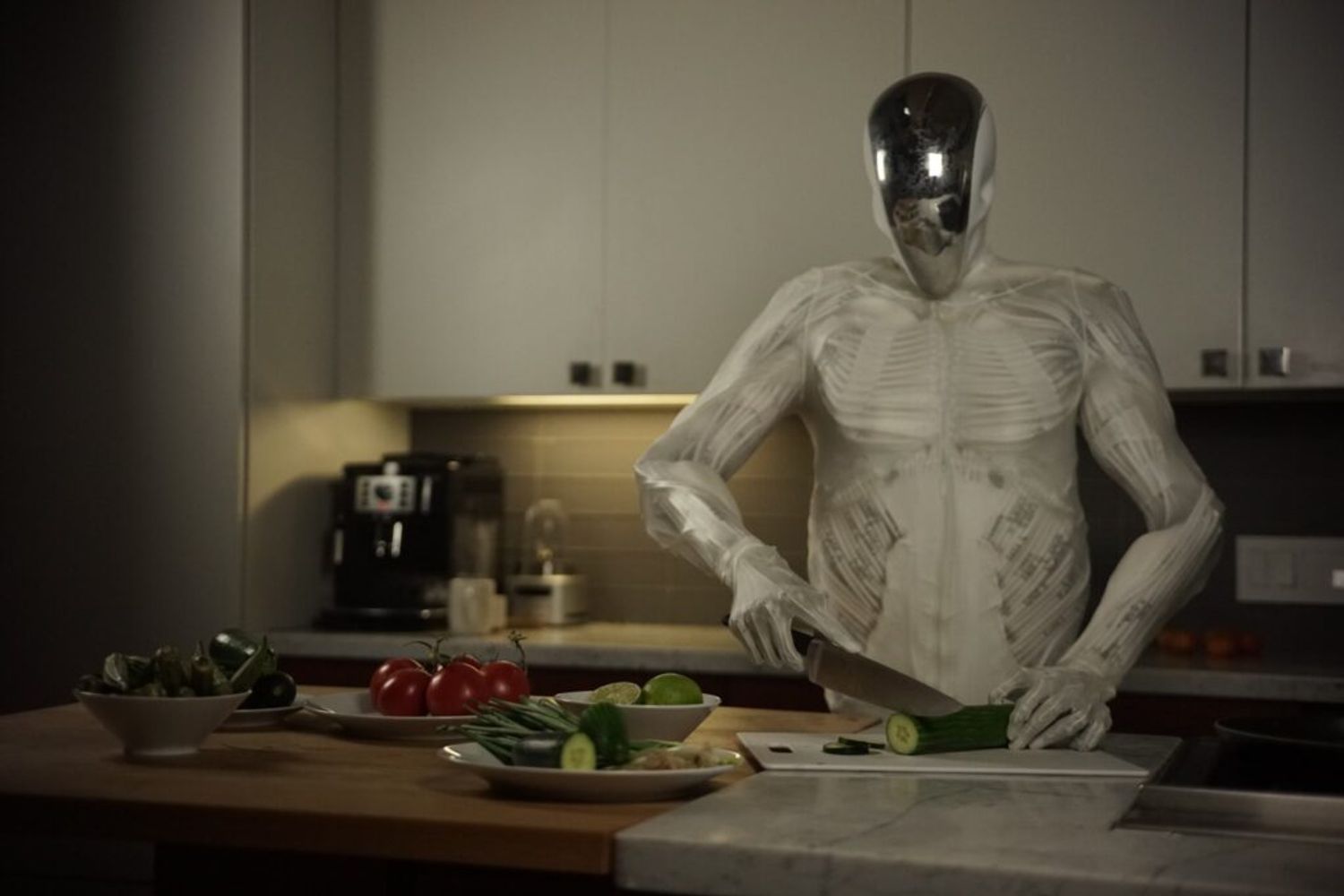ProtoClone
Protoclone is a highly advanced bipedal musculoskeletal android developed by Clone Robotics, designed to closely mimic human anatomy and movement. It features a polymer skeleton with 206 bones, over 1,000 artificial muscle fibers called Myofibers, and more than 200 degrees of freedom, enabling fluid, human-like motions. Equipped with 500 sensors including cameras, pressure, and inertial sensors, it integrates synthetic skeletal, muscular, vascular, and nervous systems. Currently powered by a 500-watt electric pump and pneumatic actuators, it is planned to transition to hydraulics for enhanced performance. Protoclone targets household and commercial applications such as cooking, cleaning, and other domestic tasks, representing a milestone in biomimetic robotics with a focus on natural movement and interaction.
Robot Specifications
- Key FeaturesKey Features
- Top Features
- Other Features
Connectivity
Wi-Fi, Bluetooth
Available Colours
Black, white, and metallic gray
Compatible Devices
Alexa, Google Home (voice command integration planned)
User Interface
Mobile app, voice commands, physical emergency stop button
App Integration
Compatible with Clone Robotics app for monitoring and control
Warranty Info
1 year limited warranty covering defects and hardware failures
Battery Life
3-5 years (typical for lithium-ion battery systems in robotics)
Available Countries
United States, Poland, European Union countries (planned expansion)
Charging Time
Approximately 3 hours (typical for lithium-ion battery packs of this size)
Carrying Capacity
Estimated 10 kg (typical for humanoid robots designed for household tasks)
Battery Pack
Estimated 2.5 kWh lithium-ion battery pack (based on power needs and runtime)
Cloud Integration
Yes, via Clone Robotics cloud platform for data analytics and remote diagnostics
Runtime
Approximately 2 hours continuous operation (estimated pneumatic system power consumption)
Speed
Max walking speed approx. 3 km/h (typical for humanoid robots with musculoskeletal design)
Sensors
Four cameras, 320 pressure-sensitive sensors, 70 inertial measurement units (IMUs), temperature sensors, humidity sensors
Dimensions
Approximately 180 cm x 60 cm x 40 cm (height x width x depth) (estimated based on human adult size and humanoid robot standards)
Review Videos
Watch expert reviews and demonstrations of this robot
More Humanoid Robots
Discover more robots in the same category
Robots From Other Categories
Discover complementary robots from different categories that work well together

Skydio R10

IZI Sky Pro 4K Camera Drone

DJI Air 4

DJI Neo Fly More Combo

A20 Pro Robot Vacuum Cleaner & Mopping

Narwal Freo Z Ultra

iRobot Roomba 105 Vac

ECOVACS DEEBOT N20 PRO

Skydio R10

IZI Sky Pro 4K Camera Drone

DJI Air 4

DJI Neo Fly More Combo

A20 Pro Robot Vacuum Cleaner & Mopping

Narwal Freo Z Ultra

iRobot Roomba 105 Vac

ECOVACS DEEBOT N20 PRO

Skydio R10

IZI Sky Pro 4K Camera Drone

DJI Air 4

DJI Neo Fly More Combo

A20 Pro Robot Vacuum Cleaner & Mopping

Narwal Freo Z Ultra

iRobot Roomba 105 Vac

ECOVACS DEEBOT N20 PRO

Skydio R10

IZI Sky Pro 4K Camera Drone

DJI Air 4

DJI Neo Fly More Combo

A20 Pro Robot Vacuum Cleaner & Mopping

Narwal Freo Z Ultra

iRobot Roomba 105 Vac

ECOVACS DEEBOT N20 PRO

Skydio R10

IZI Sky Pro 4K Camera Drone

DJI Air 4

DJI Neo Fly More Combo

A20 Pro Robot Vacuum Cleaner & Mopping

Narwal Freo Z Ultra

iRobot Roomba 105 Vac

ECOVACS DEEBOT N20 PRO
Frequently Asked Questions
Get answers to common questions about this robot
Q1. What is Protoclone by Clone?
Protoclone is a humanoid robot by Clone Robotics featuring a musculoskeletal structure with 206 polymer bones and 1,000 artificial muscle fibers for human-like movement.
Q2. When was Protoclone launched?
The prototype was demonstrated in early 2025, with preorder plans for a limited Clone Alpha edition later that year.
Share Your Feedback
Help us improve! Share your thoughts, suggestions, or report any issues.
No login required!




